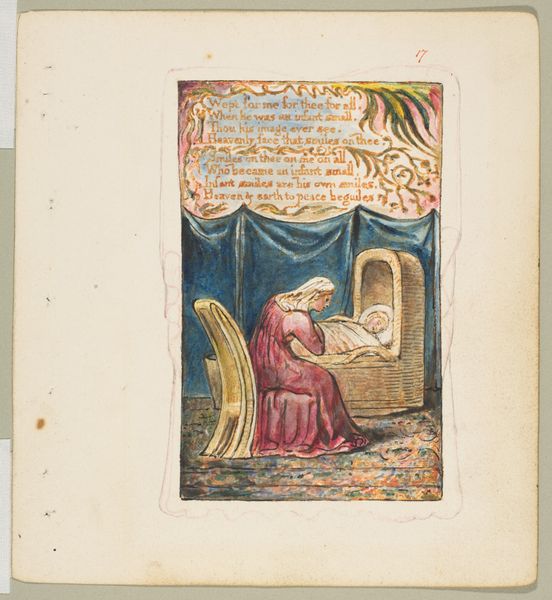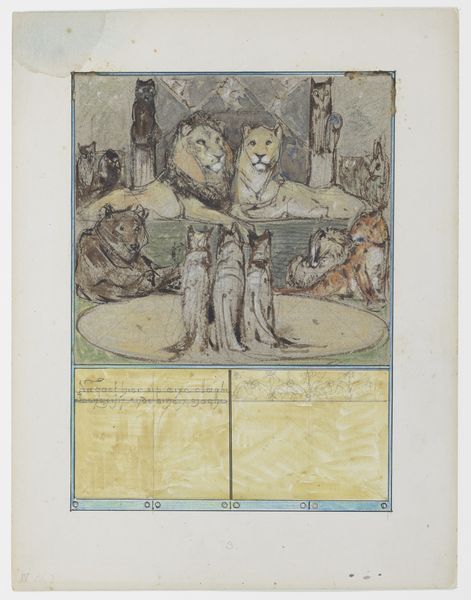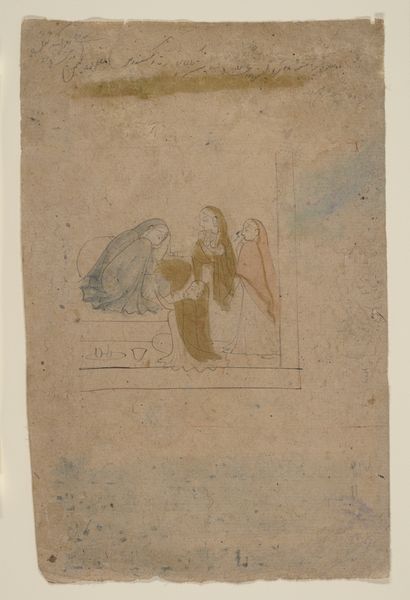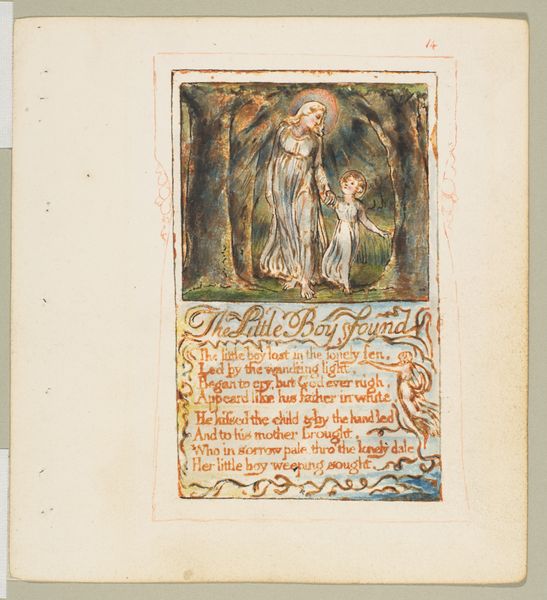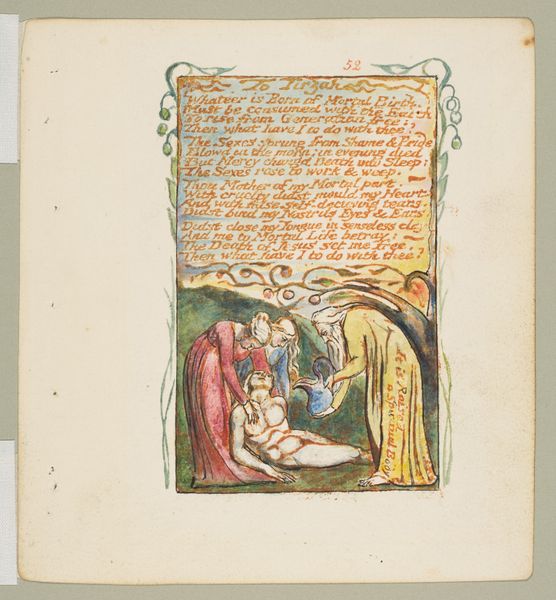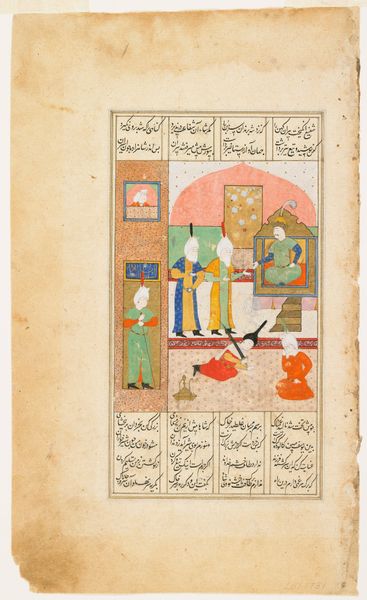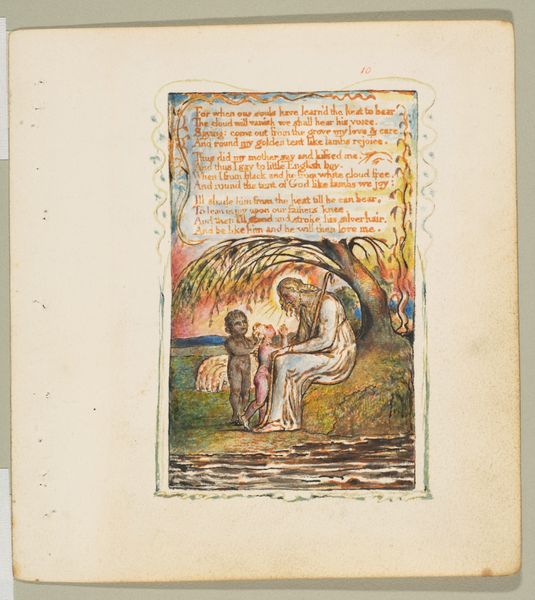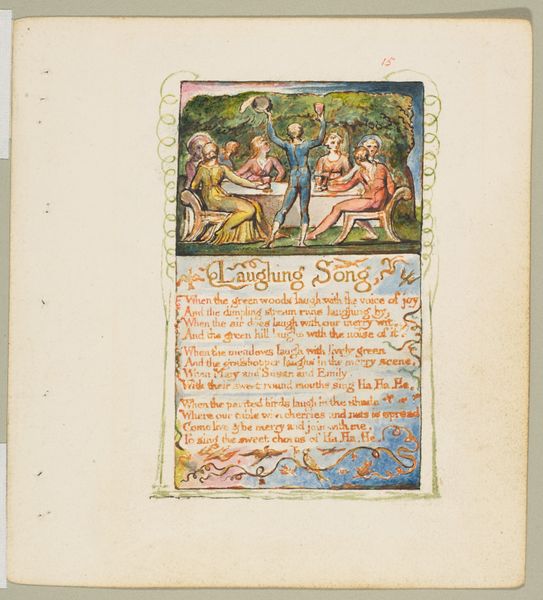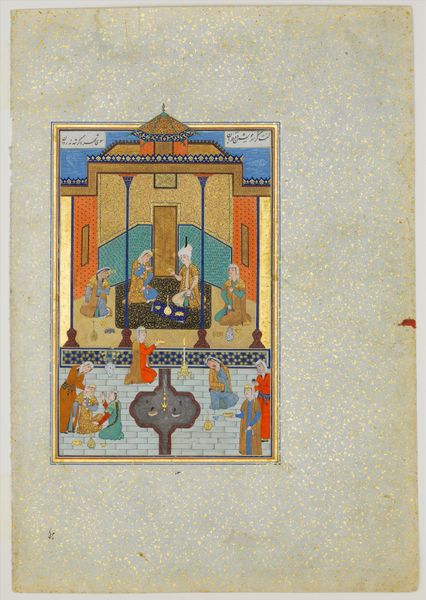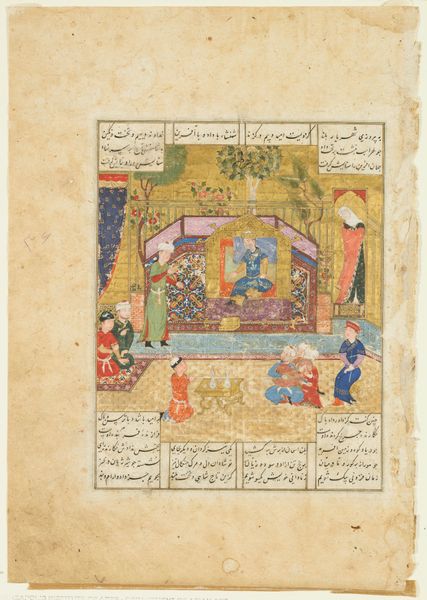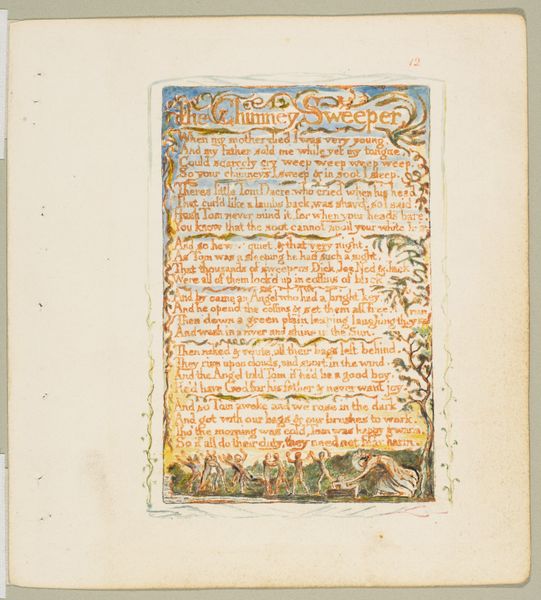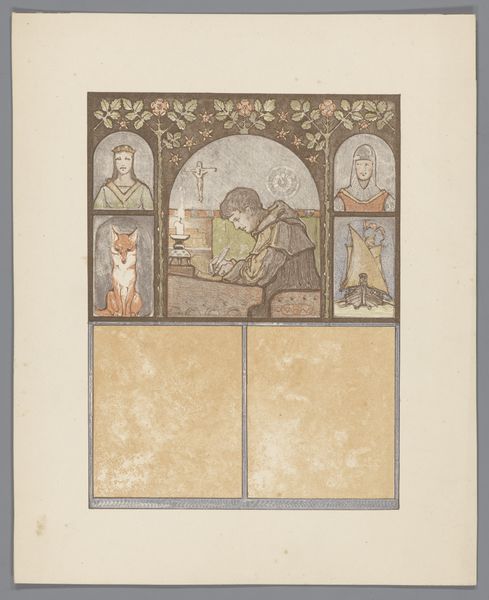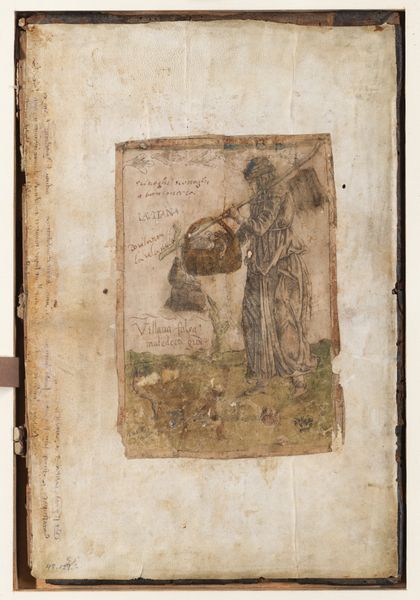
Ontwerp voor Illustratie (fol. 1): Van den Vos Reinaerde, In het midden de schrijver Willem 1866 - 1939
0:00
0:00
drawing, coloured-pencil, paper, watercolor, ink
#
drawing
#
coloured-pencil
#
medieval
#
water colours
#
narrative-art
#
figuration
#
paper
#
watercolor
#
ink
#
coloured pencil
#
mixed media
#
miniature
#
watercolor
Dimensions: height 324 mm, width 251 mm
Copyright: Rijks Museum: Open Domain
Curator: Here at the Rijksmuseum, we're looking at "Ontwerp voor Illustratie (fol. 1): Van den Vos Reinaerde, In het midden de schrijver Willem," a piece made sometime between 1866 and 1939 by Bernard Willem Wierink, employing ink, watercolor, and colored pencil on paper. What's your immediate take on it? Editor: It feels deliberately archaic. There’s a distinct medieval sensibility that brings to mind illuminated manuscripts – that very constrained, delicate atmosphere of quiet contemplation. A muted color palette underscores this mood, doesn’t it? Curator: Absolutely, I feel it too! It is narrative, after all, in the tradition of medieval storytelling, and one senses that reverence in Wierink's choices, and even his process. The way he renders figures—those stoic, almost abstracted portraits flanking the writer—lends this feeling of history rendered anew. It’s not simply representation but almost a feeling. Editor: Those flanking figures speak to power, the patriarchy—guiding the author’s hand, consciously or not. And what about that fox peeking from behind? Surely, Reynard the Fox implies something about trickery, about the uncomfortable truths unveiled through animal fable. A narrative choice laden with subversive potential. The position of the fox and its diminutive size compared to the figures above certainly suggests a societal position or outlook. Curator: Subversion... I see that, although to me that little fox looks wistful. There is so much text incorporated, it's not "art for art's sake", is it? It is more about relaying something vital to us. Like a hidden message in time, meant for later eyes. What does the visual balance evoke in you? That central panel showing Willem... It dominates the work. Editor: The central positioning of Willem reinforces the author’s power, certainly. Yet I keep wondering, is Wierink celebrating or critiquing this position? The piece almost begs us to interrogate systems of authority— who gets to write the narratives? Who’s marginalized, rendered as just a peek in the frame like that Reynard figure. I can't see this piece apart from conversations of race and class dynamics embedded within narratives of power. Curator: That gives a completely fresh meaning to the art piece, I hadn't quite thought of it that way. Now I will think of everything anew; a testament to how pieces gain added meaning from viewers! It also reminds me of art's power of telling and being re-told over and over again. Editor: Precisely. It encourages constant re-evaluation and critical discussion, especially as we confront contemporary perspectives with historical pieces like these. I appreciate artworks that resist passive viewing, creating critical inquiry rather than accepting face-value readings.
Comments
No comments
Be the first to comment and join the conversation on the ultimate creative platform.
